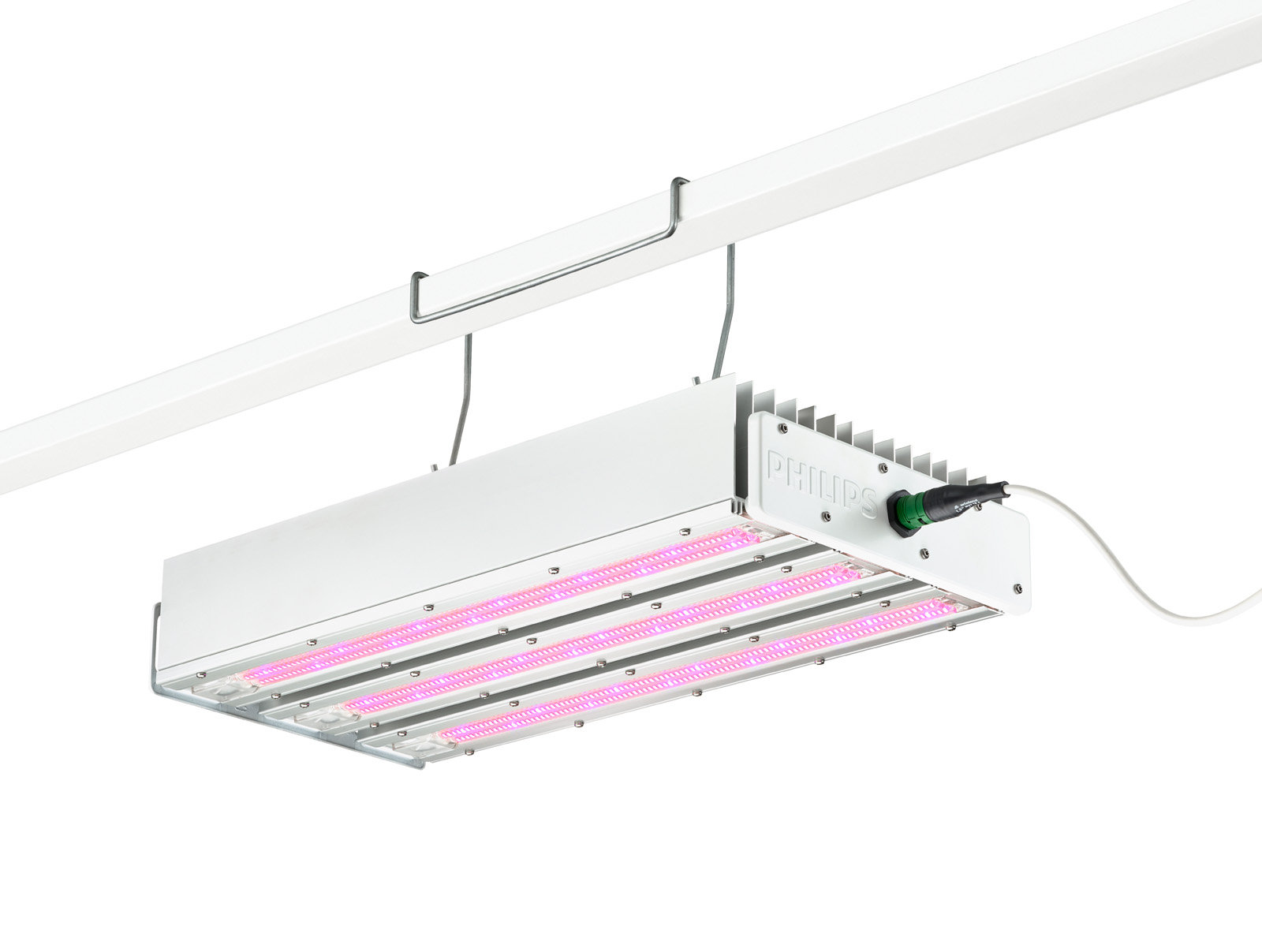How do Philips grow lights meet the high-end standards
Added on 17 January 2023


While there are many different manufacturers of LED grow lights, not all of them meet the high-end standards required by today’s growers. In this blog post, we will take a look at some of the clever product design features that set the design of our Philips Greenpower LED toplighting force (TLF) apart from the rest.
Robust design, low maintenance
Moving parts can lead to the collection of dust inside a grow light, and even create a short circuit during the product’s lifespan. Furthermore, these parts can deteriorate and eventually may need to be replaced. Designing a product with passive cooling, meaning there are no moving parts such as fans or active cooling by means of water flow through the module, keeps a product low in maintenance while increasing its longevity.

Cleaning the lighting installation should be easy and possible without being afraid that this will lead to damage or corrosion of the modules. With its IP66 rating, a grow light is designed to withstand dust and water ingress, increasing product robustness and lifespan. Moreover, when the product is designed with a cast aluminum body that serves as its heat sink. This includes large, rounded cooling vents that makes the unit easy to clean without creating water puddles that may eventually lead to corrosion.
Furthermore, the grow light should withstand the use of crop protection, cleaning agents and other chemicals that might be used inside an enclosed greenhouse environment. The on/off driver is positioned in a separate part within the housing, which makes the light more compact and provides less shading and improves ease of installation. To guarantee higher resistance to corrosion, manifolds are preferably covered with a white powder coating that is applied electro-statistically and cured with either heat or UV light.
Uniform light for consistent crop growth
Uniform lighting is essential for growing a consistent crop. When light is applied uniformly to the crop, this helps produce a more stable, high-quality product. To maintain the uniformity of the crop throughout the light’s lifespan, you want to retain the light spectrum emitted by the lights. While using specially designed plastic lenses that are resistant to yellowing and can withstand higher temperatures, growers can rest assured that the grow light will emit the applied light spectrum consistently. There will be no significant or transient change in the specific spectral composition and photon flux. Philips grow lights have been extensively tested and projected to have a light delivery over time of L95, at 36,000 hours according to international standards. This means that after operating for 36,000 hours, the grow light will still have 95% of its initial light output. Read more about how to evaluate performance claims of LED grow lights.
Keeping the installation simple
When designing new grow lights, we want to make it a priority to keep installation simple and quick. The Philips GreenPower LED toplighting force was designed to fit into existing HPS connectors, or be mounted on C-profiles, making retrofitting an easy option for growers who don't want to make any major changes to their further installation. A lighting installation with 1000W HPS consumes 1040W power, therefore our 1040W product can easily replace these HPS lights in existing systems by using easy-to-install Wieland RST20i3 connectors. This also means that the cables, breakers, etc. do not have to be adjusted or upgraded, thereby saving the grower money. Additionally, because the lights do not have high transient current peaks when the lights are switched on during the millisecond domain, growers do not need to worry about changing breakers when making the switch from HPS to LED, saving both time and further money.
Over a decade of product experience
With a commitment to providing world-class LED lighting, our Philips horticulture LED solutions have been helping growers increase the yield and quality of their crops while reducing operational costs since 2007. This dedication has led us to develop high-end, reliable, and robust lighting solutions.
The TLF was designed and developed with these 15 years of experience in LED lighting, allowing growers to upgrade their existing lighting installation with an efficient product created to exceed the high-end standards in today’s greenhouses. The TLF has a high efficacy and delivers 3.7 µmol/J to the crop, even reaching up to 3,9 µmol/J when dimmed to 50%. It also features a long lifespan and smart design which will keep it functioning consistently for many years without need of maintenance or replacement.
Our TLF is the perfect example of how we provide growers with the best possible LED lighting solutions. With its unique design, this product offers unparalleled performance and value for greenhouse operation.
Read Rene’s other blog on the design of the Philips GreenPower LED toplighting compact, ‘8 choices to a cost-effective LED grow light’.

Rene van Wees is a system expert manager within the horticulture LED solutions team from Signify. He ensures growers are provided with high-end horticulture lighting designs. With his background in optics, he trains internal teams and external customers in the radiometry of the horticulture product portfolio. He provides consultancy to customers and engineers to drive continuous improvement of Philips LED lighting solutions.
More news















